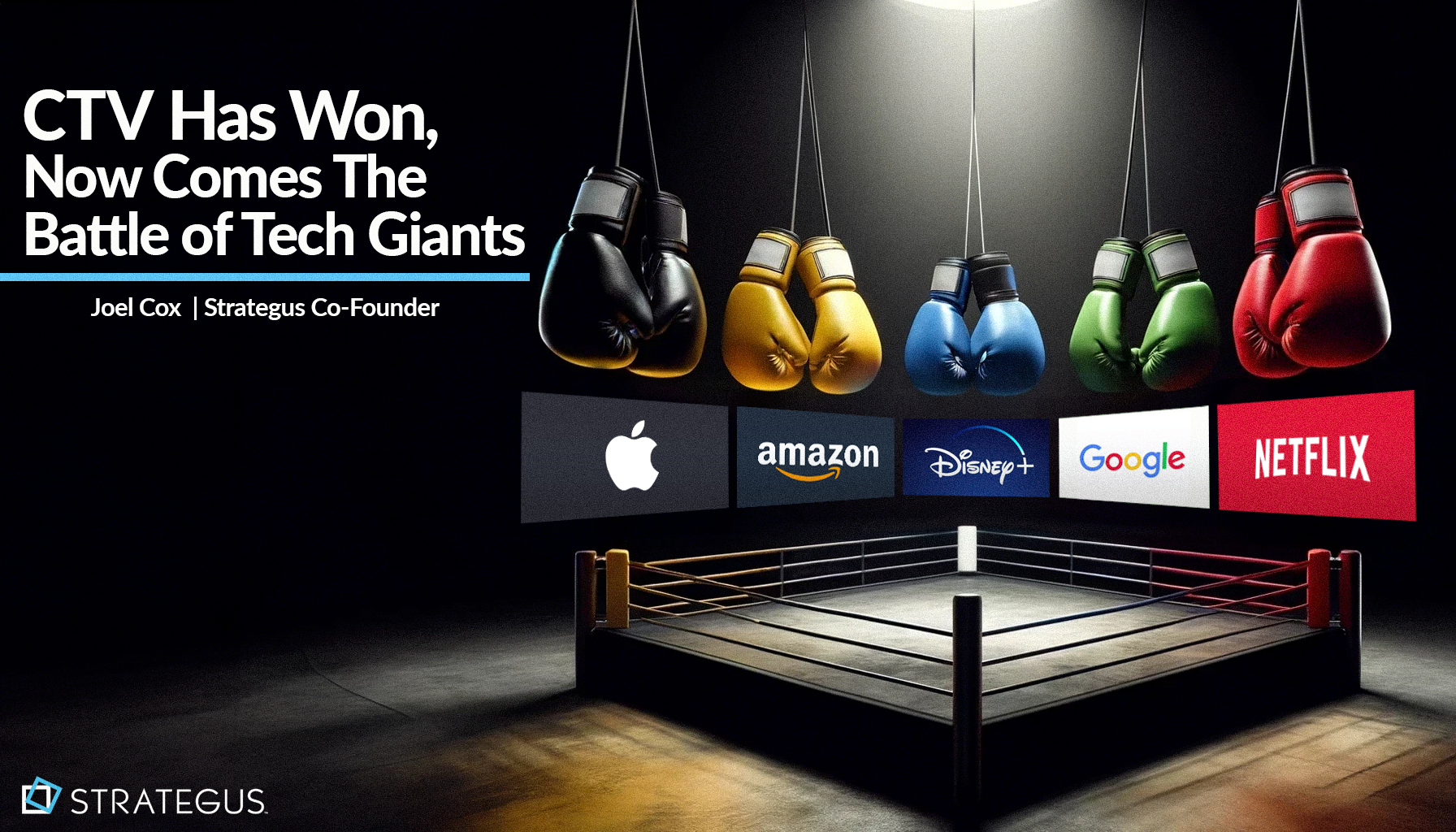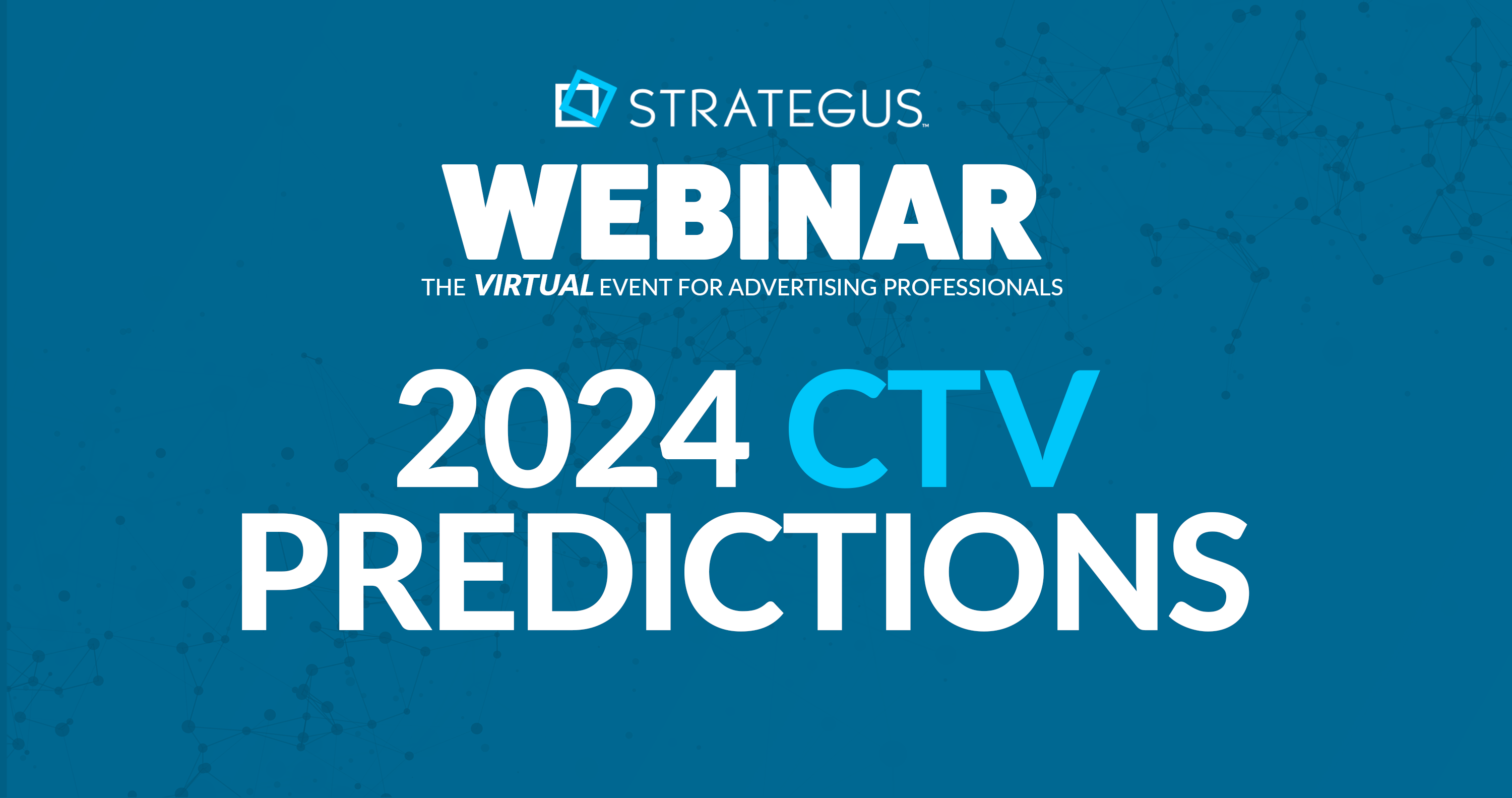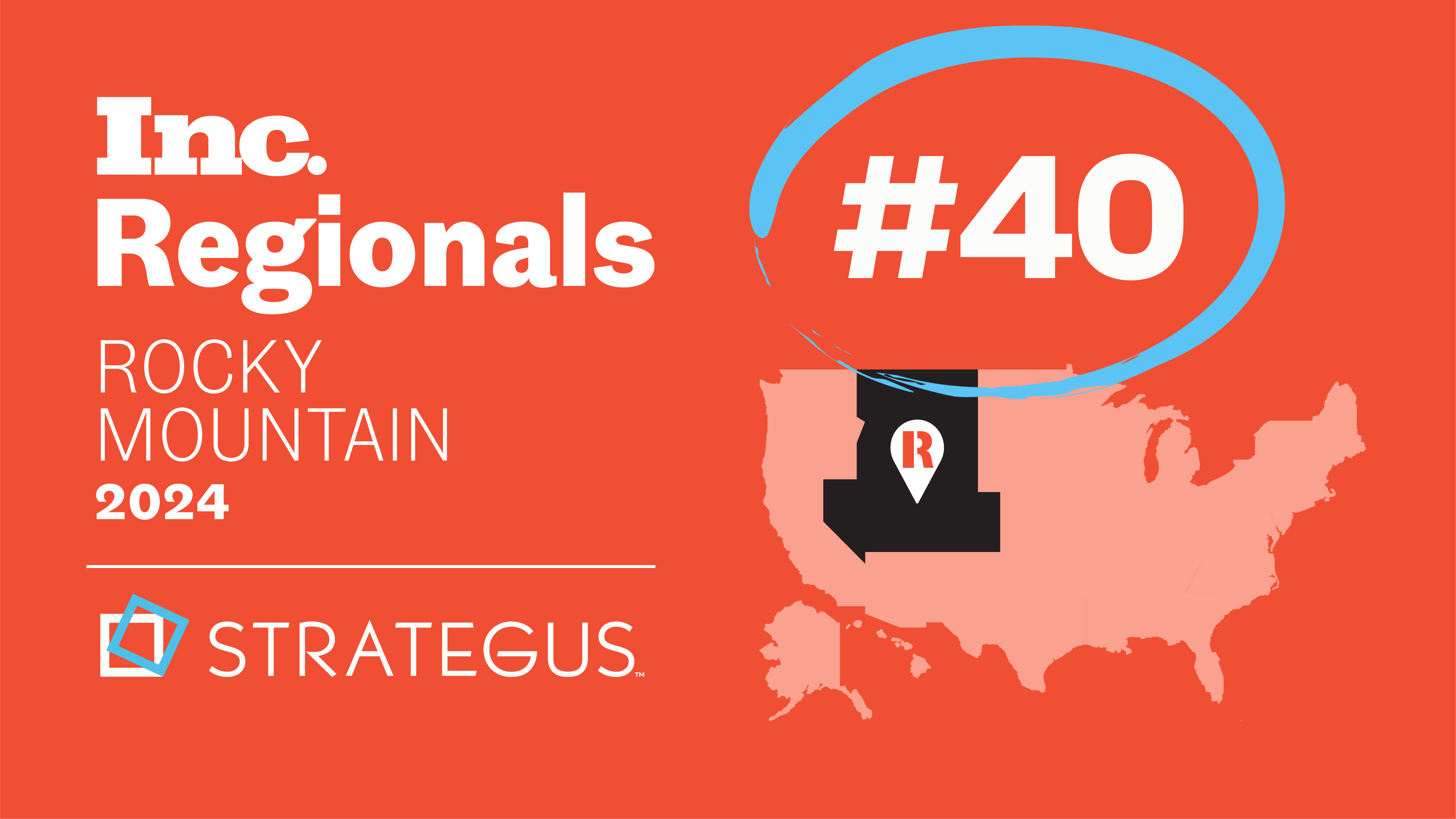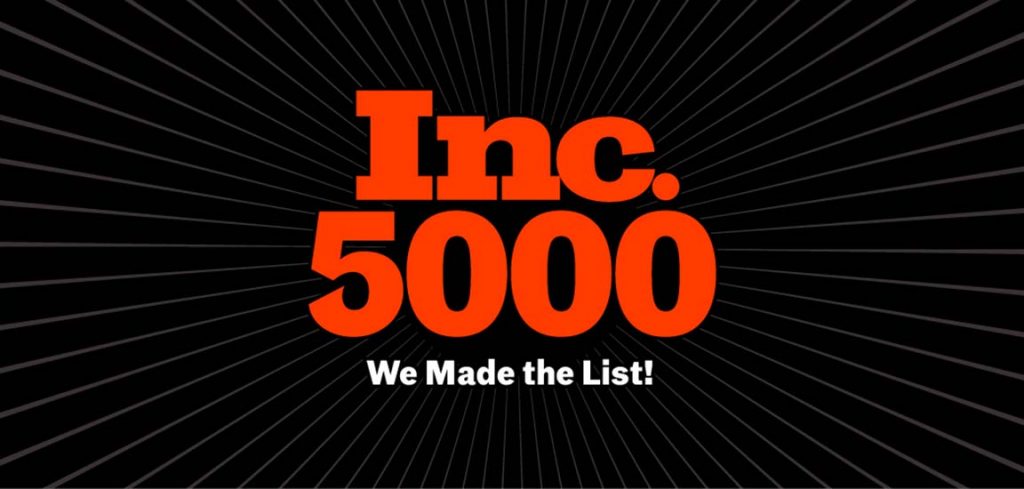- Home
- Strategus Blog
- Connected TV Advertising – Examples Of Audience Hyper-targeting
Connected TV Advertising – Examples Of Audience Hyper-targeting
 Andy Dixon
Andy Dixon
7 minutes read

This post is a part of our “Comprehensive Guide To Connected TV Advertising” — Click here to learn more!
With the introduction and growth of OTT (over-the-top) and CTV (connected TV) advertising, comes one of the most exciting developments in digital advertising–the ability to hyper-target your audience in the living room. While television has always been a high reach medium, ad placements on traditional broadcast or satellite TV take a one-size-fits-all approach and lack the capacity to cater to niche audiences. Furthermore, the increase in cord cutters making the jump to streaming services has allowed digital media to overtake traditional media altogether in terms of time spent.
Audience targeting has always played a substantial role in an effective advertising campaign. Historically, there is a lot of guesswork involved and not a whole lot of data to work with. You might even say that it involved throwing things into the void and bidding for prime time spots hoping something would stick. What if you could get your message in front of your core audience? Consistently.
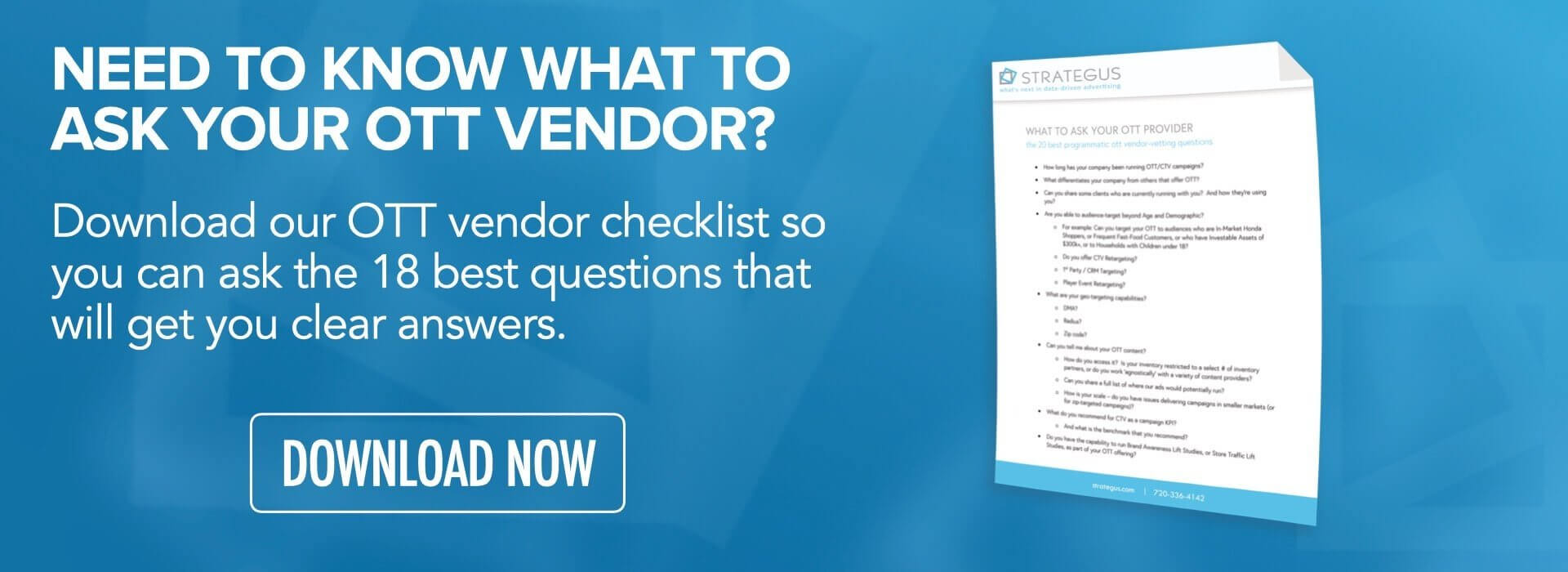
In general, OTT advertising allows for a far more sophisticated audience targeting approach as compared to traditional advertising mediums. Strategus takes this concept and practice to an entirely new level, with what we describe as a content agnostic approach. In this article, we’re going to take you behind the curtain and highlight the power of hyper-targeting when executed correctly.
What are the different ways audience targeting can be leveraged in OTT/connected TV advertising?
To truly process the extent of how specific audience targeting can get, we need to first understand the amount of data that is available at our disposal. Whether we like it or not, modern day devices are all loaded with software and hardware that survey and track behavior. Throw in data scientists, artificial intelligence, machine learning, etc. and we have ourselves a highly comprehensive system for identifying ideal personas.
Beyond the standard location, household income, and age, we can narrow your audience all the way down to dietary restrictions, shopping habits, preferred device, and so much more. Lets take a look a look at connected TV advertising examples of hyper-targeting:
1. Behavioral Targeting
Overview: related to individual personalities e.g. interests, online behavior, hobbies, activities, lifestyle, etc.
From relevant interests to browsing behavior, we can stream a CTV/OTT ad campaign to individuals that fit a specific category or product. Say that the brand we are advertising is a fitness device. It would make sense to focus on individuals who lead active lifestyles, eat healthy, and have a purchased other home workout equipment.
That’s just the tip of the iceberg though! Let’s take it further. Perhaps you figure out that the majority of the customer base follows a Keto diet, shops at Lululemon and Adidas, but not Nike, and for whatever reason, they also drive a Prius. Believe it or not, we can find an entire niche of customers that fit all of those behaviors. That’s how defined we can get.
2. Demographic Targeting
Overview: objective data points e.g. age, location, gender, income, education, etc.
When we say demographic, you’re likely thinking about the standard location, gender, and age data points. With the technology available, we can actually create any imaginable demographic you can come up with. This includes ethnicity, education level, income, employment status, and so much more.
An example of this would be a CTV ad campaign for a new dating platform that is targeting young professionals in big cities. To maximize adoption of the platform, you create a strategy that is centered around men and women, ages 25-32, with a college degree, earning between 55K – 100K a year, who are transplants in the city, and have a hometown that is not in the same state.
3. Contextual Targeting
Overview: related to what is already being watched by the consumer
Contextual targeting is where it gets interesting and has a lot of room for creativity. When we use this term, we are referring to identifying audiences that are already consuming media which is related to your campaign. This is taking the idea of “the right place at the right time” and capitalizing on it.
Think about it this way. If someone was a religious viewer of a cooking show, running a CTV ad for a new nonstick pans, immediately after they complete an episode of the show, would be pretty great timing. The context increases the likelihood that the targeted individual will take action, in turn maximizing your results.
4. Time-of-Day Targeting
Overview: timing of the ad
While this may sound self-explanatory, time-of-day targeting refers to more than just when your ad is being streamed. Yes, you can make a general strategy to run your campaign “in the evening, around dinner time” when you believe most people are engaged. That is very basic with respect to how much more you can do to leverage timing.
At Strategus, we believe that serving ads to the right audience at the right time includes leveraging research. When it comes to time-of-day targeting, we’re thinking more along the lines of running the same ad to the night owl at midnight and to the early bird at sunrise. Dayparting allows that level of targeting to be possible.
5. Technographic Targeting
Overview: related to device characteristics e.g. connection speed, browser, operating system, etc.
On occasion, there is a need to target an audience based on technographic specifications. It could be because the product that is being advertised is relevant to that characteristic. An iPhone bluetooth speaker wouldn’t make sense for an Android user to purchase, for example. However, this level of targeting can also be leveraged to optimize your overall CTV campaign.
The effectiveness of any video ad experience is reduced dramatically if there are playback issues. Instead of wasting those impressions, we may decide to target households where there is a certain, minimum connection speed. This will increase overall close rates.
6. Geographic Targeting
Overview: user’s real-time location
Geographic targeting is another no-brainer. Our approach allows us to pinpoint exactly where an ideal customer is and only marketing to them when they are within a predefined location. This minimizes the number of wasted impressions and increases local awareness of the brand.
Take a student that is working in a cafe. He or she goes on social media before they pack up and is served with an ad of a retail store that is directly across from the front entrance of the cafe. As they walk out of the cafe and recall the promotion they just viewed, the likelihood of them stopping in that store is now significantly higher.
How can audience hyper-targeting be optimized for maximum impact?
With several options for audience targeting, we decided to ask ourselves the question: what would further enhance any CTV campaign? Now, smart advertisers know to take a blended approach and combine multiple options to achieve the best results. After careful consideration, we reached the conclusion that the missing piece of the puzzle was ad completion.
For that reason, we developed what is now known as our Encore Omnichannel technology. We recognized the huge opportunity to leverage technological advances to fully optimize any CTV campaign and created this enhancement tool to instantly re-target already-engaged viewers with relevant, clickable calls-to-action on all their devices.
The Bottom Line
At the end of the day, the audience targeting options for OTT and CTV advertising is a huge improvement over what is available with traditional TV. All of the targeting options– whether stacked up, or tactfully blended– will set you up for a highly effective, hyper-targeted campaign that will drive results. Thank you for reading our post on CTV connected TV advertising examples of audience hyper-targeting.
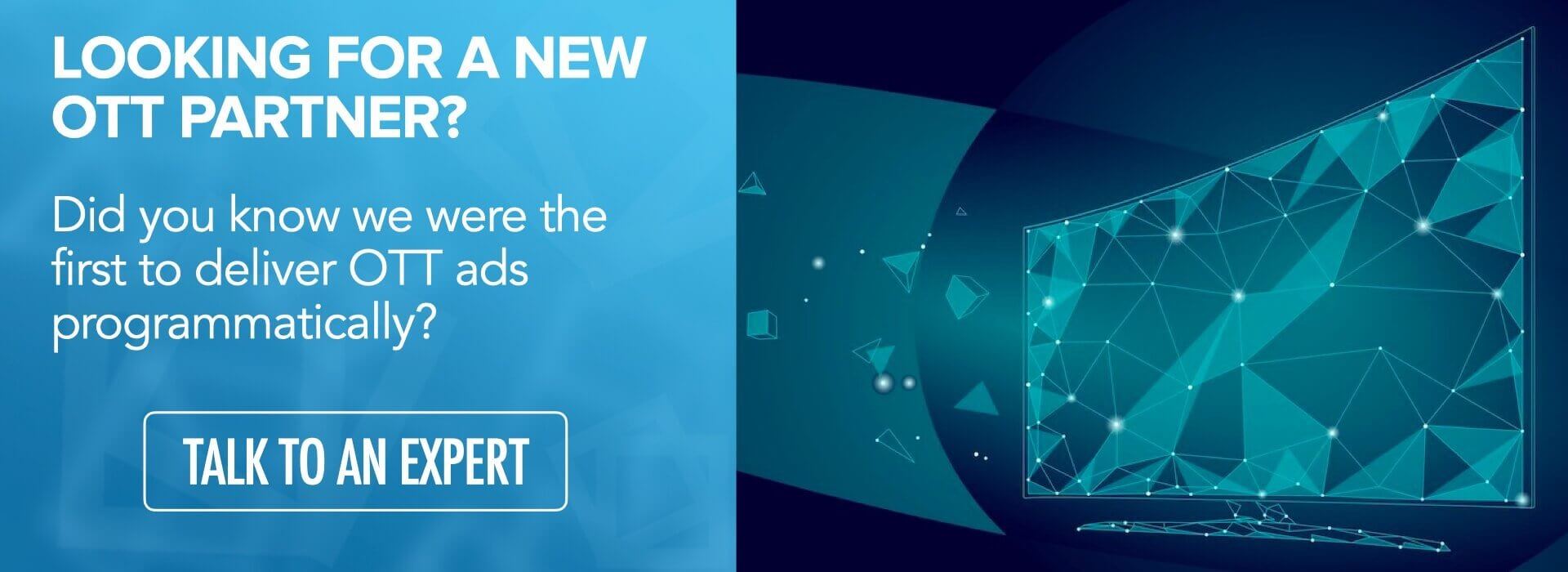
If you are looking to take targeting to the next level, however, Strategus is extremely advanced in this arena. We’ve really refined our approach to allow fully customizable targeting that is consistent and reliable. Contact us to learn more about our cutting-edge practices.

Andy Dixon is a seasoned Content Writing Specialist at Strategus, renowned for his expertise in creating engaging and impactful digital content. With over a decade of experience in content creation, Andy has honed his skills in a variety of niches, ranging from technology and marketing to education.
Strategus is a managed services connected TV(CTV) advertising agency with over 60,000+ campaigns delivered. Find out how our experts can extend your team and drive the result that matter most.
Talk to an Expert
Seeking a Custom CTV Strategy That Delivers?
What to read next
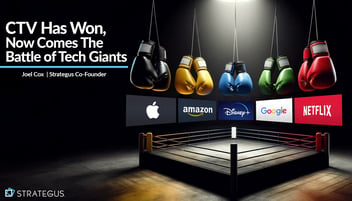
CTV Has Won, Now Comes the Battle of the Tech Giants
Who will be the winner with Amazon, Netflix, Google, Apple, and Disney battling for CTV supremacy? Just a few years ago, a phenomenon called...
6 minutes read

What Is Addressable TV Advertising and How Does It Work
In the early days of TV, ads were placed based on the programs they supported. This means that every household tuning into a given broadcast would...
7 minutes read

10 OTT Trends Shaping CTV Advertising in 2024
In the 17 years since Netflix launched its streaming service, over-the-top (OTT) media has become standard. What started as a novel concept now...
15 minutes read

What Is an Ad Exchange and How Does It Work
Before ad exchanges, media inventory was exclusively purchased through direct negotiations with publishers. This worked fine in the early days. But...
8 minutes read



